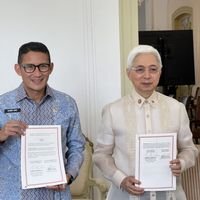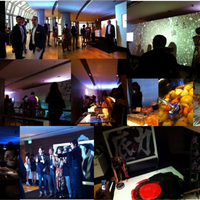Creative economies of ASEAN countries making waves

Can the creative industries of ASEAN make waves? Patrick Cooke, Asia Regional Editor for the Oxford Business Group, explores this theme in a recent article.
The article looks at the momentum of K-Pop into the Philippines and other SE Asian countries:
K-Pop is just one element of Korean popular culture that has made inroads across the region and beyond in recent years, alongside TV dramas, movies, cuisine, fashion, cosmetics and video games. It has been driven not just by the creativity of Korean artists, performers and designers, but by a highly corporate – and sometimes ruthless – approach to talent management, combined with innovative social media strategies to engage directly with consumers and supportive government policies.
As a result, South Korea’s cultural exports generated a record $8.2bn in 2017, and the Korean Wave – known in the mother country as Hallyu – has been partially credited for driving growth in the tourism industry. Other soft power benefits are more difficult to quantify yet easy to imagine.
Cooke asks:
But should the fast-growing nations of ASEAN be content to remain consumer markets for the pop-culture giants of South Korea and the US, or can they realistically aspire to nurture their own creative industries into new growth engines for their economies?
Cooke then examines the inherent advantages of the creative industries in the Philippines economic sector:
The Philippines has many inherent advantages that could support the growth of the creative industries. First and foremost, it has a large, consumption-driven internal market, buoyed by advantageous demographics. The median age is one of the lowest in Asia, and the Philippine Statistics Authority forecasts the population to expand from 92m in 2010 to 142m by 2045. This creates a fertile ground for a vibrant youth culture to flourish, sustained on a diet of music, film, fashion, arts and online content. The innate Filipino creativity and all-pervasive musicality is impossible for first-time visitors to the country to ignore; the challenge lies in harnessing this for wider economic benefits.
Already we see signs of success and growing demand for local cultural content, as evidenced by the highest-ever grossing Filipino movie at the box office in 2018. As far back as 2014, the creative industries contributed as much as 7.34% of national GDP and 14.14% of employment. Philippine culture also holds natural cross-over appeal for a wide variety of international markets, owing to its unique blend of Hispanic, American and Asian influences.
and sees Indonesia as well positioned for creative economy growth:
Another ASEAN member state in need of new growth engines to counteract weaknesses in its domestic economy is Indonesia. Indeed, the country shares many similarities with the Philippines in that it is a vast and highly populated archipelagic nation whose economy is largely dependent on private consumption.
As it undertakes a variety of policy measures to address its chronic current account deficit and stabilise the currency, the administration of President Joko Widodo (Jokowi) has recognised the potential of creative industries to boost domestic consumption and increase foreign exchange earnings. In 2015 the Jokowi administration mandated the establishment of the Creative Economy Agency (BEKRAF), tasked with nurturing the growth of film, fashion, music, handicrafts and other creative industries to end an overreliance on commodities.
Similar content
posted on
27 Oct 2022
posted on
19 Aug 2013
posted on
25 Apr 2017
posted on
13 Mar 2012
posted on
06 May 2018
posted on
01 Dec 2022






